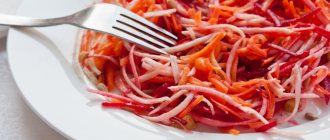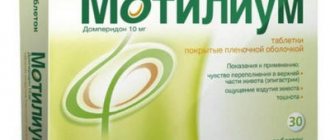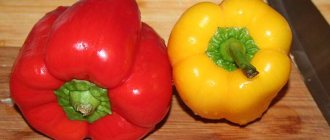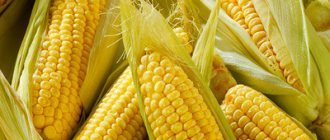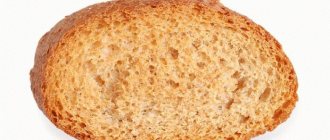- September 27, 2018
- Gastroenterology
- Elena Batrakova
When health problems begin, you need to take special care of the body and, depending on the disease, take the necessary measures to prevent complications.
Such a common disease as gastritis is already familiar to many. The main thing is not to miss the moment and start treatment on time. The most important requirement for gastritis is dietary nutrition. You need to know what you can eat and what you can’t.
Every person who strives for healthy nutrition understands the need to include complex carbohydrates in their diet. These include cereals. This article will focus on millet.
Fans of this cereal, when making a diagnosis, ask themselves whether it is possible to eat millet porridge if they have gastritis.
The benefits of millet
Millet cereal contains many vitamins and microelements. It is also high in fiber. Millet has an enveloping effect and has a beneficial effect on digestion in general. It also eliminates dysbiosis and normalizes stool.
Properties of millet:
- The presence of B vitamins helps improve memory. With regular consumption of millet, fatigue and irritability are suppressed. Cereals have a beneficial effect on the skeletal system.
- Thanks to the manganese it contains, millet restores the body's metabolic processes.
- Sufficiently high levels of potassium strengthen the cardiovascular and circulatory systems.
- Complex carbohydrates make the product indispensable for diabetes.
- Millet has a diuretic effect. Porridges made from this cereal are very good to eat if you have kidney problems.
- Sodium improves the secretion of gastric juice.
Millet is considered an average product in terms of calorie content. Nevertheless, cereals are often used in various diets. Millet porridge removes toxins and other negative excesses.
Regularly including millet porridge in reasonable quantities in your diet can perfectly support the health of the body. It is also very important not only to know what to eat, but also how to prepare it correctly.
Harm of cereals
When including cereal porridge in your diet, you need to remember that allergic reactions are possible when consumed. They are associated with gluten intolerance. For allergies, the following are prohibited: wheat (wheat cereal and semolina are made from grains), oats, barley (barley is made from grains), rye. When adding a new porridge to the menu, monitor your body’s reaction. If unpleasant consequences arise after taking it, it is better to refuse the porridge.
You need to cook porridge from natural grains. “Quick” cereals with fruit and berry additives are not suitable for eating with gastritis. They contain sweeteners, flavors, and dyes that negatively affect the condition of the gastric mucosa.
Rules for preparing millet porridge for gastritis
To get the maximum benefit from porridge, you need to prepare it correctly. For healthy people, this will allow them to avoid many troubles with the gastrointestinal tract. And in case of any problems, following the basic rules of preparation will speed up the recovery time.
Basic preparation requirements:
- at the initial stage, millet porridge is cooked in water;
- milk is added during the cooking process;
- millet should be cooked to a loose and soft consistency;
- It is better to add salt and sugar to the finished dish.
The last ingredients are added during the remission stage. During the period of exacerbation of the disease, their presence is extremely undesirable.
For gastritis, millet porridge should have a liquid, viscous consistency. This is a very important point. Otherwise, it will be very difficult for the stomach to digest and absorb the product. After all, millet contains a large percentage of fiber.
Recipe for millet porridge for gastritis
- Rinse the glass of millet thoroughly.
- Add a glass of water, put on fire and cover with a lid.
- When the cereal swells, add 1.5 cups of milk and put on low heat.
- If necessary, add salt and sugar at the very end.
You can replace milk completely with water or vice versa. But the above recipe is optimal.
Back to the main point
For diseases of the gastrointestinal tract, porridge is the basis of a strict diet. The dishes allow you to receive complete nutrition: proteins, carbohydrates, fats, essential microelements, vitamins. Porridges are useful due to their enveloping effect and nutritional value. Slimy porridges are especially recommended - rice and oatmeal. Hercules is allowed for any type of gastritis; in case of illness, it is better to cook soup from pearl barley. During periods of remission, it is allowed to include millet porridge in the diet. But you need to be careful with cereals; they increase the acidity of the stomach and damage the inner surface of the organ.
For gastritis, you need to consume porridge in fresh, warm and liquid form. It is allowed to add a little milk, cottage cheese, permitted vegetables and fruits to the dish.
Millet with added vegetables
Millet porridge is healthy in itself. But the nutritional value can be significantly increased. Due to what? Millet porridge with pumpkin is very popular for gastritis. It is very tasty and healthy to add dried fruits to millet porridge. There are a large number of recipes. You can find your favorite way to prepare porridge or treat yourself to constant variety.
Recipe for millet porridge with pumpkin, carrots and dried apricots:
- rinse a glass of millet;
- add a liter of milk and simmer for half an hour;
- stew 1 grated carrot and 300 grams of pumpkin;
- rinse the dried apricots and pour hot water over them;
- add stewed vegetables and chopped dried apricots to the porridge.
Then the whole porridge is transferred to a ceramic container and put in the oven for 30 minutes. The temperature should not exceed 140 degrees. The result will be not only a healthy dish, but also very tasty.
You can experiment and add those vegetables, fruits and berries that you like best. In addition to pumpkin, you can add broccoli or green beans to the porridge. For those with a sweet tooth, you can add raspberries, apples, peach and other permitted foods.
Millet for gastritis
With the help of millet, which is a source of fiber, you can improve digestion, eliminate constipation, gas formation, bloating and stomach cramps. It also reduces the likelihood of more serious gastrointestinal diseases. Since millet contains a lot of fiber, it is recommended for people with difficult intestinal motility. Millet not only helps to gently and quickly cleanse the intestines, as well as get rid of constipation, but also cleanse the body of toxins.
Millet acts as a powerful probiotic and is recommended for use by people who have undergone antibiotic treatment and are at risk of developing dysbiosis. To strengthen your immune system, you only need to eat millet porridge 3-4 times a week. Due to the unique, beneficial components of millet, it can be recommended to people with weak bodies, especially after operations or long-term illnesses. It also does not cause allergies.
Millet for gastritis can be used like other types of cereals, but you should not eat it too often and in large quantities. To eliminate inflammation, you can even use medicines prepared on the basis of this cereal.
With the help of millet, which is a source of fiber, you can improve digestion, eliminate constipation, gas formation, bloating and stomach cramps
Medicines from millet for gastritis:
- pour 2 liters of boiling water over ½ cup of cereal and keep covered in a saucepan for 2–3 hours. Strain, drink 150 ml if pain or heartburn occurs;
- mix rye, oat and millet flakes, taken in equal parts, steam a handful with a glass of boiled goat milk and eat this breakfast for 14 days. This will help relieve inflammation and restore the gastric mucosa;
- pour a tablespoon of cereal with 250 ml of purified or cold boiled water, leave for an hour, then grind the grains in a blender and mortar and drink the milk on an empty stomach. Repeat the procedure for 20 days.
For gastritis, it is advisable to combine millet with fats of vegetable origin. You can add hemp, flaxseed, sesame, and olive oil to the porridge. These additions will make the main product even more useful and speed up the recovery of the stomach.
How to choose and prepare millet that is beneficial for gastritis
You need to buy only high-quality cereals that have matured properly and been stored in the right conditions. It should be pure yellow (not dusty grey), although there are varieties in red and even black. The grains should be large, round, as chosen. Only then will the porridge be tasty and healthy. Millet goes rancid easily, so you should always check the expiration date on the package.
The grains should be large, round, as chosen. Only then will the porridge be tasty and healthy. Millet goes rancid easily, so you should always check the expiration date on the package. Millet must always be thoroughly washed, changing the water several times (5-6 times) and finally rinsing with boiling water.
You need to cook in a large volume of water and at the same time remember that the porridge itself increases in volume by 5-6 times during cooking. Having brought it to half-cookedness, the water should be drained, pour in milk and now cook until ready, when each grain “reveals its depths.”
Millet porridge for gastritis with high acidity
Despite all the advantages of millet, it can aggravate the situation. If heartburn appears after a portion of porridge, this indicates an increase in acidity. Millet porridge provokes an increase in stomach acid levels and increases secretion. This can cause exacerbation of gastritis.
Therefore, if you have high stomach acidity, you should be very careful when consuming millet porridge. And if the doctor insists, then give up this cereal altogether for a while. And introduce it into the diet during remission in small portions.
Possible risks
During the period of exacerbation of gastritis, you need to be careful about your diet. Even if you cook millet porridge in water, it can cause harm. The composition contains fiber and dietary fiber, which are difficult for the stomach to digest. Excessive load on the digestive organ can lead to disruptions in its functioning.
Millet contains a lot of polysaccharides, which puts a lot of stress on the pancreas. People with a similar problem need to be careful with millet cereals.
Main contraindications:
- intestinal inflammation;
- frequent constipation;
- dysfunction of the thyroid gland;
- children under 2 years of age;
- for problems with potency in men.
Recent studies have shown that millet cereals are not at all friendly with iodine. Therefore, millet and iodine-rich foods should be eaten at different times.
Millet description of properties
Millet is the purified seeds of millet. The more technological stages millet grains have gone through before reaching store shelves, the better and more expensive the millet grains are.
Types of millet:
- dranets: this kind of grain is obtained after peeling off the rough shell. The result is whole, shiny grains with a bitter aftertaste. Millet porridge takes a long time to cook;
- polished millet: goes through all technological stages. The finished product looks like solid yellow matte grains. Polished millet cooks faster than millet;
- crushed millet: This is a by-product of millet cereal production, consisting of coarsely ground millet kernels that have been crushed during the grinding process. Crushed millet is added to whole grain bread or further milled to produce millet flour;
Millet is the hulled seeds of millet
- millet flakes: this is the most expensive millet product, as it goes through all stages of processing, including primary cooking and vacuum drying. Millet flakes are included in instant porridges.
Despite the differences in processing, each type of cereal is beneficial for the human body. Millet is rich in starch, protein and fat, and also contains small amounts of fiber and sugars. Millet contains a lot of phosphorus, potassium, magnesium, sulfur, calcium and other macroelements. Of the trace elements, it contains iron, zinc, manganese, aluminum and about a dozen other substances.
The vitamin composition of millet is represented by elements PP, B6, E, thiamine, folic acid and some others. In terms of the quality and quantity of protein, millet can be compared with wheat cereals, and in terms of the content of vegetable fats, millet is superior only to oatmeal.
Millet improves the diuretic process. Cereals strengthen nerve cells, help the liver remove toxins, and maintain muscle mass. Millet is recommended for consumption by residents of regions with poor ecology. The cereal is prescribed to patients with pancreatitis, atherosclerosis, and various liver pathologies. During the cooking process, millet grain increases approximately 6-7 times, which makes it into delicious crumbly porridge. Millet is easily digestible and is often present in the arsenal of dietary nutrition.
Basic recommendations
Millet porridge for gastritis should be consumed exclusively warm. This food temperature will not irritate the stomach. Millet contains a large amount of starch. Therefore, experts recommend eating porridge in the first half of the day.
You need to realize that porridge is not a side dish for meat and fish. This combination is very difficult for the body to digest. Especially if there are problems with the digestive system. There is no need to overload the body. Therefore, it is better to consume complex carbohydrates separately from protein foods.
It is better to prevent a disease than to treat it. You need to take care of your health without weekends and holidays. And also teach children to eat right from early childhood. And always remember that even healthy food can be harmful if you don’t know the measures.
